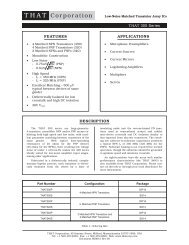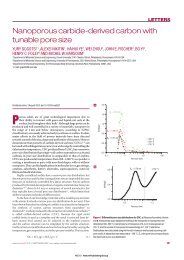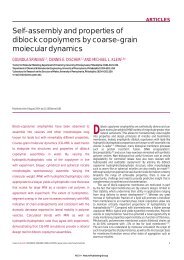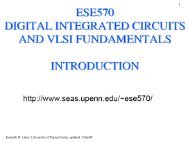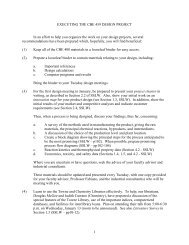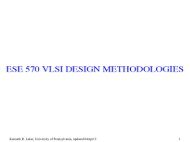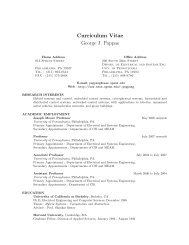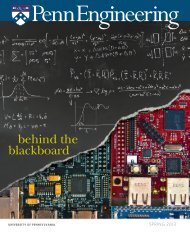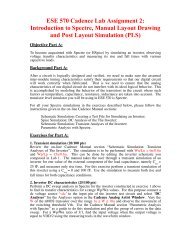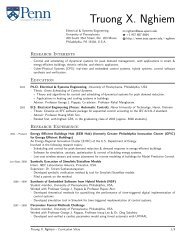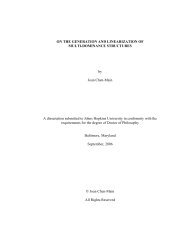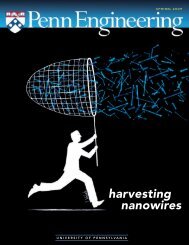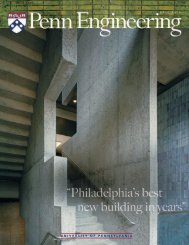14.4. Normal Curvature and the Second Fun- damental Form
14.4. Normal Curvature and the Second Fun- damental Form
14.4. Normal Curvature and the Second Fun- damental Form
Create successful ePaper yourself
Turn your PDF publications into a flip-book with our unique Google optimized e-Paper software.
The vector −→ t is <strong>the</strong> unit tangent vector, <strong>the</strong> vector −→ n is<br />
called <strong>the</strong> principal normal, <strong>and</strong> <strong>the</strong> vector −→ b is called <strong>the</strong><br />
binormal.<br />
<strong>Normal</strong> <strong>Curvature</strong> . . .<br />
Geodesic <strong>Curvature</strong> . . .<br />
Fur<strong>the</strong>rmore <strong>the</strong> curvature κ at s is κ = ‖f ′′ (s)‖, <strong>and</strong> thus,<br />
f ′′ (s) = κ −→ n .<br />
Home Page<br />
Title Page<br />
The principal normal −→ n is contained in <strong>the</strong> osculating plane<br />
at s, which is just <strong>the</strong> plane spanned by f ′ (s) <strong>and</strong> f ′′ (s).<br />
◭◭<br />
◭<br />
◮◮<br />
◮<br />
Recall that since f is parameterized by arc length, <strong>the</strong> vector<br />
f ′ (s) is a unit vector, <strong>and</strong> thus<br />
f ′ (s) · f ′′ (s) = 0,<br />
which shows that f ′ (s) <strong>and</strong> f ′′ (s) are linearly independent <strong>and</strong><br />
orthogonal, provided that f ′ (s) ≠ 0 <strong>and</strong> f ′′ (s) ≠ 0.<br />
Page 685 of 711<br />
Go Back<br />
Full Screen<br />
Close<br />
Quit



